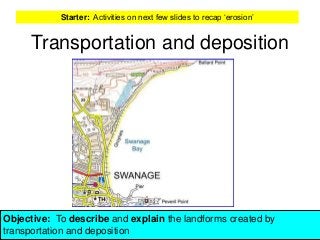Report
Share

Recommended
Recommended
More Related Content
Featured
Featured (20)
Product Design Trends in 2024 | Teenage Engineerings

Product Design Trends in 2024 | Teenage Engineerings
How Race, Age and Gender Shape Attitudes Towards Mental Health

How Race, Age and Gender Shape Attitudes Towards Mental Health
AI Trends in Creative Operations 2024 by Artwork Flow.pdf

AI Trends in Creative Operations 2024 by Artwork Flow.pdf
Content Methodology: A Best Practices Report (Webinar)

Content Methodology: A Best Practices Report (Webinar)
How to Prepare For a Successful Job Search for 2024

How to Prepare For a Successful Job Search for 2024
Social Media Marketing Trends 2024 // The Global Indie Insights

Social Media Marketing Trends 2024 // The Global Indie Insights
Trends In Paid Search: Navigating The Digital Landscape In 2024

Trends In Paid Search: Navigating The Digital Landscape In 2024
5 Public speaking tips from TED - Visualized summary

5 Public speaking tips from TED - Visualized summary
Google's Just Not That Into You: Understanding Core Updates & Search Intent

Google's Just Not That Into You: Understanding Core Updates & Search Intent
The six step guide to practical project management

The six step guide to practical project management
Beginners Guide to TikTok for Search - Rachel Pearson - We are Tilt __ Bright...

Beginners Guide to TikTok for Search - Rachel Pearson - We are Tilt __ Bright...
Unlocking the Power of ChatGPT and AI in Testing - A Real-World Look, present...

Unlocking the Power of ChatGPT and AI in Testing - A Real-World Look, present...
15922393.ppt
- 1. Objective: To describe and explain the landforms created by transportation and deposition Transportation and deposition Starter: Activities on next few slides to recap ‘erosion’
- 2. Objective: To describe and explain the landforms created by transportation and deposition Swanage Bay An example of headlands and bays on the Dorset coastline.
- 3. Objective: To describe and explain the landforms created by transportation and deposition Headlands and bays
- 4. Objective: To describe and explain the landforms created by transportation and deposition If these photos were taken of one headland over time, which of these landforms would be the first to be formed?
- 5. Objective: To describe and explain the landforms created by transportation and deposition How do waves operate? What are sub-aerial processes and why are they important? What processes of erosion operate at the coast? What landforms are created by erosion? What processes of transport operate at the coast? What landforms are created by deposition? Learning objectives
- 6. Objective: To describe and explain the landforms created by transportation and deposition How is sediment transported along the coast?
- 7. Objective: To describe and explain the landforms created by transportation and deposition This movement of sediment along the coastline is called longshore drift. Direction of movement swash Backwash Backwash is always at right angles to the beach Longshore drift
- 8. Objective: To describe and explain the landforms created by transportation and deposition Examination question What is longshore drift? Add an arrow to the photo to show which direction longshore drift is operating in. Draw your own diagram to explain how longshore drift operates. Study the photograph of Swanage Beach. Level 4 I say what longshore drift is Level 5 I explain how long shore drift works. Level 6 I explain in detail how longshore drift works. Level 7 I use examples from the Dorset coast to explain how longshore drift works
- 9. Objective: To describe and explain the landforms created by transportation and deposition How do waves operate? What are sub-aerial processes and why are they important? What processes of erosion operate at the coast? What landforms are created by erosion? What processes of transport operate at the coast? What landforms are created by deposition? Learning objectives
- 10. Objective: To describe and explain the landforms created by transportation and deposition Landforms of coastal deposition 1) Beaches 2) Spits 3) Tombolos and Bars
- 11. Objective: To describe and explain the landforms created by transportation and deposition How are beaches formed? Beaches form in sheltered environments, such as bays. When the swash is stronger than the backwash, deposition occurs. Sometimes sand from offshore bars can be blown onto the shore by strong winds. In such cases dunes may form – such as at Studland on the Dorset Coast.
- 12. Objective: To describe and explain the landforms created by transportation and deposition How are spits formed?
- 13. Objective: To describe and explain the landforms created by transportation and deposition How are spits formed?
- 14. Objective: To describe and explain the landforms created by transportation and deposition How are spits formed?
- 15. Objective: To describe and explain the landforms created by transportation and deposition How are spits formed? (use diagram to help you) Level 4 I say what a spit is Level 5 I explain how a spit is formed. Level 6 I explain in detail how a spit is formed. Level 7 I use examples from the Dorset coast to explain how a spit is formed.
- 16. Objective: To describe and explain the landforms created by transportation and deposition Coastal landforms in Studland
- 17. Objective: To describe and explain the landforms created by transportation and deposition Erosion or deposition?
- 18. Objective: To describe and explain the landforms created by transportation and deposition Key Ideas Waves are the result of the wind blowing over the sea. They break as they approach land. Swash and backwash describe the movement of a wave on the beach. Fetch is the distance that the wind has travelled. Sub-aerial processes such as weathering and mass movement occur on the cliff face. Coastal processes of erosion include hydraulic action, attrition, corrosion and solution. Landforms created by erosion include headlands and bays, caves, arches, stacks and stumps. Longshore drift is a method of coastal transport. Landforms created by deposition include beaches, spits, tombolos and bars.